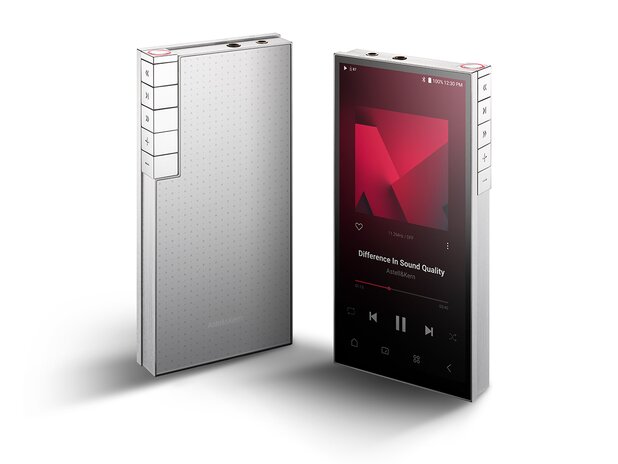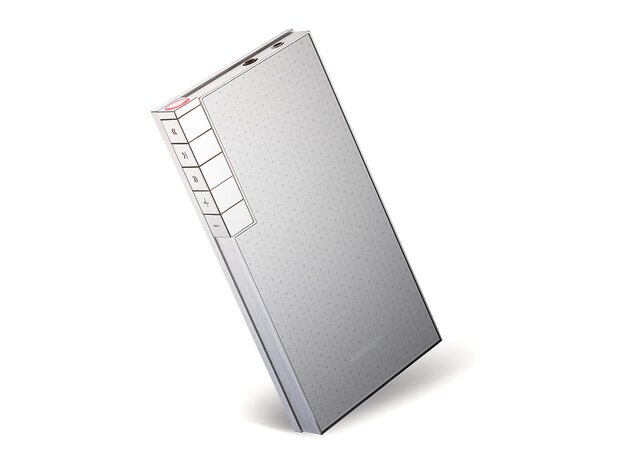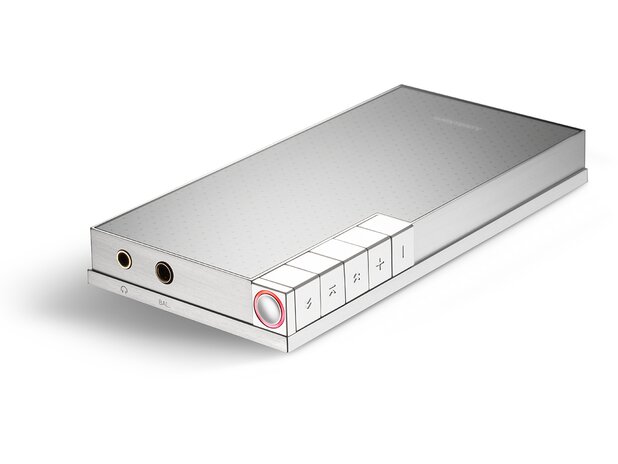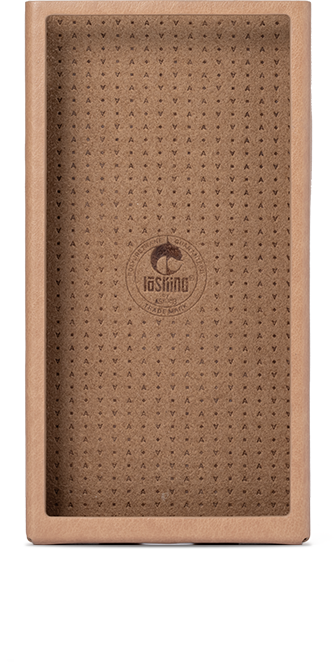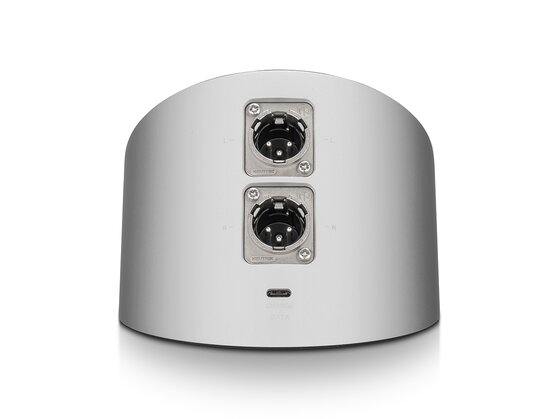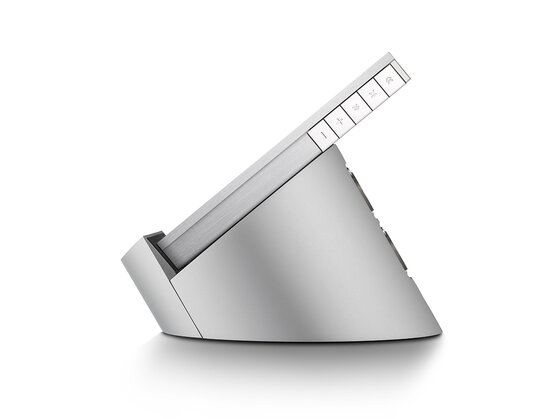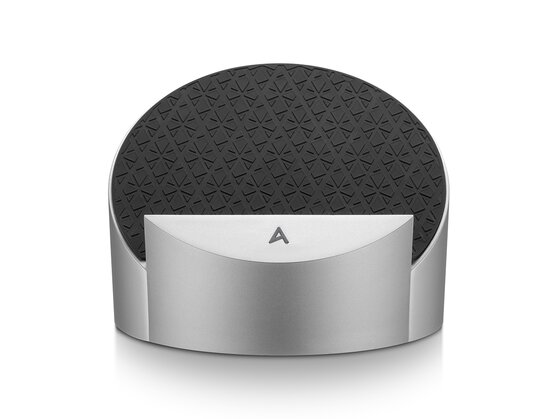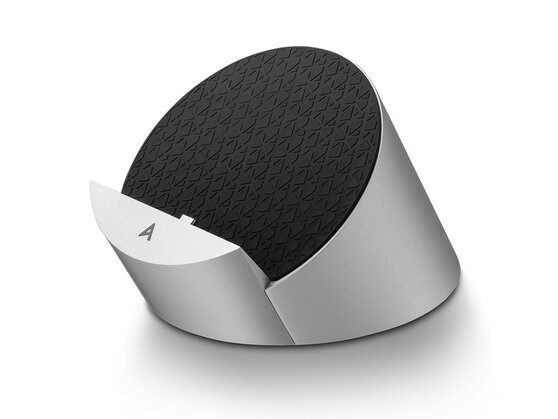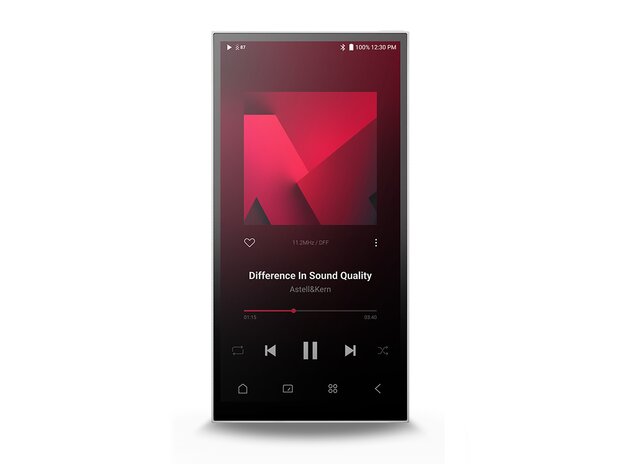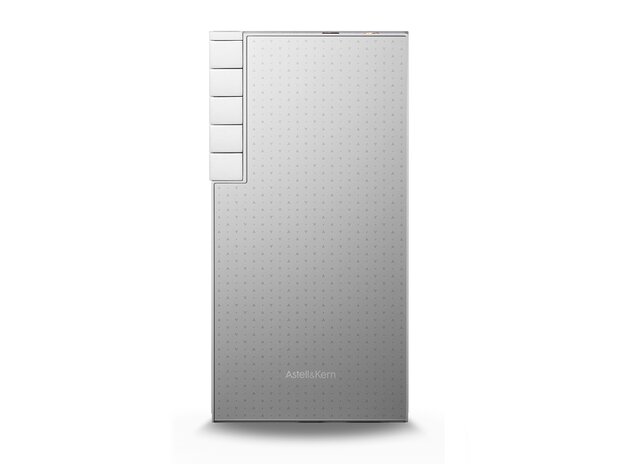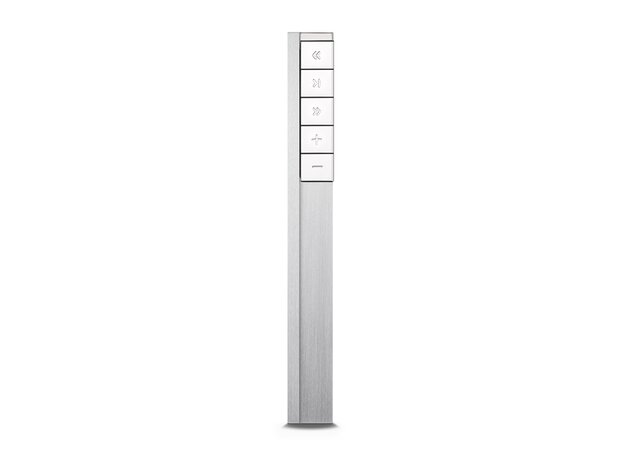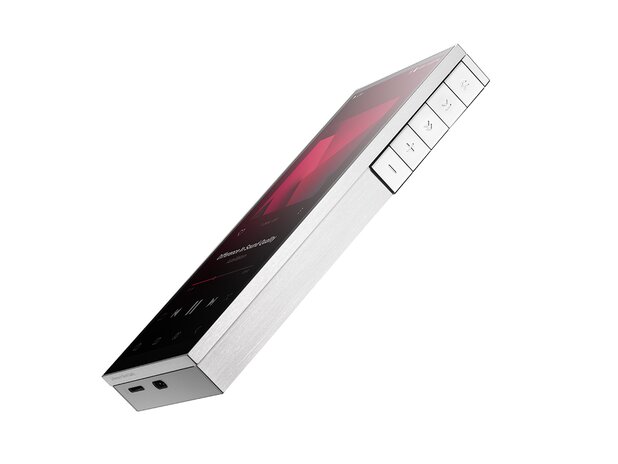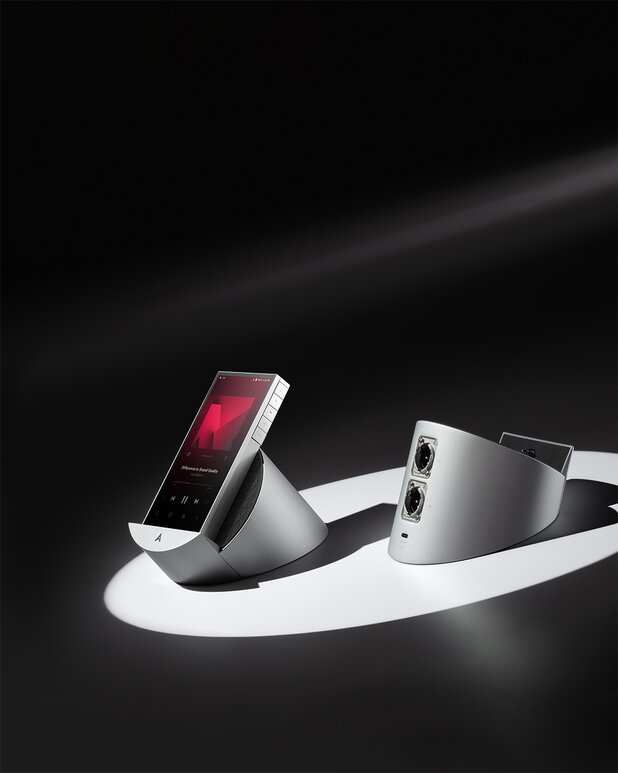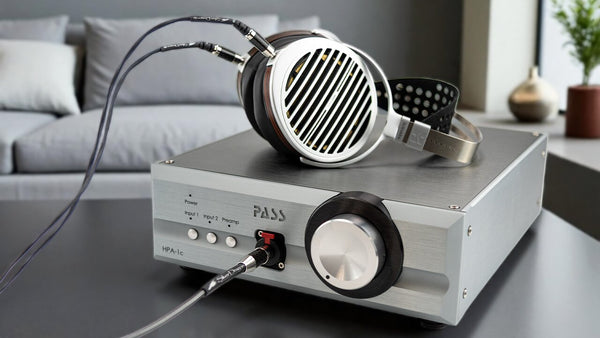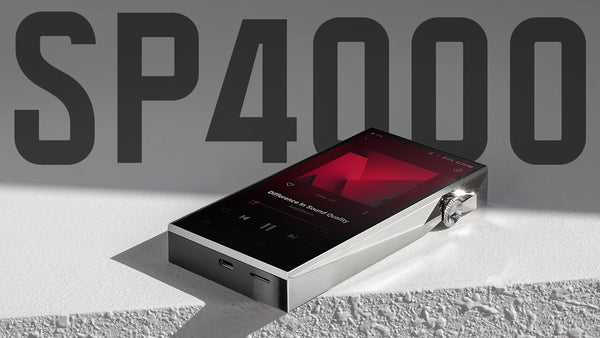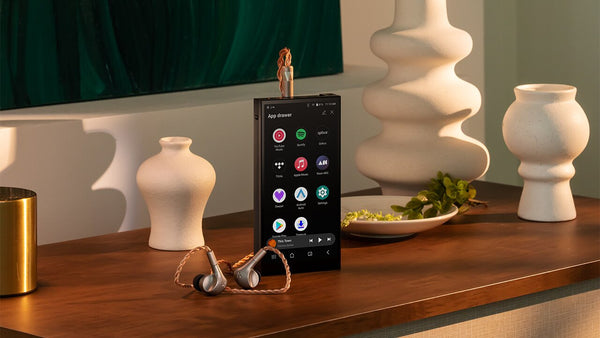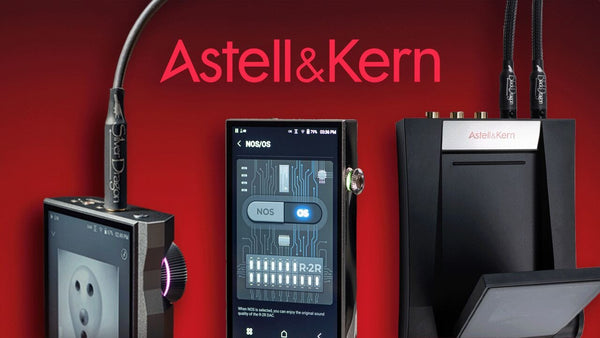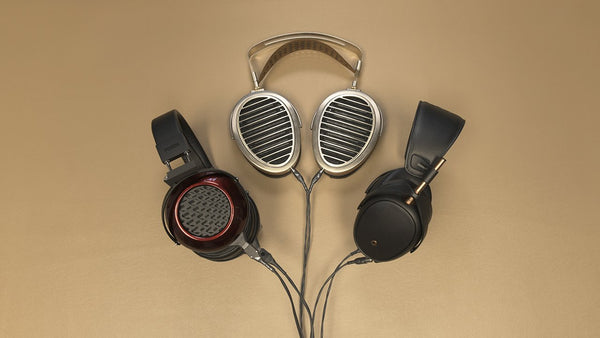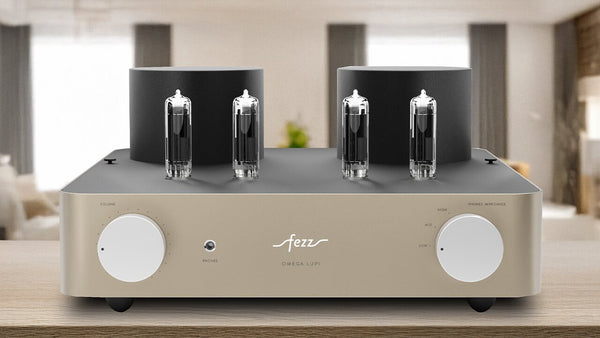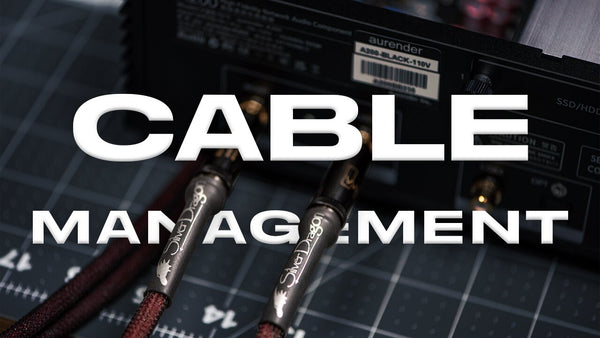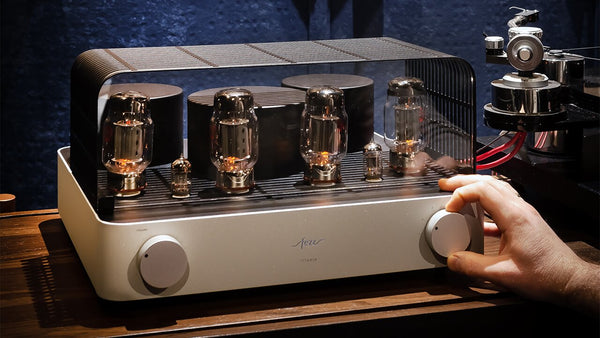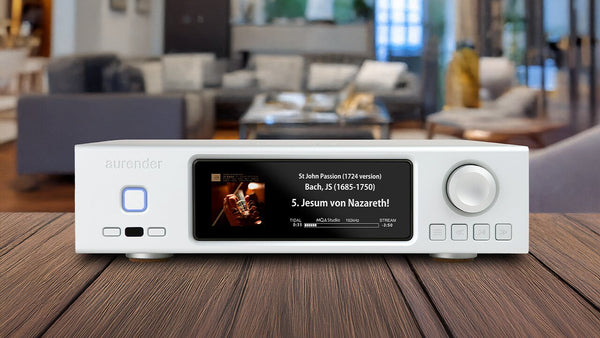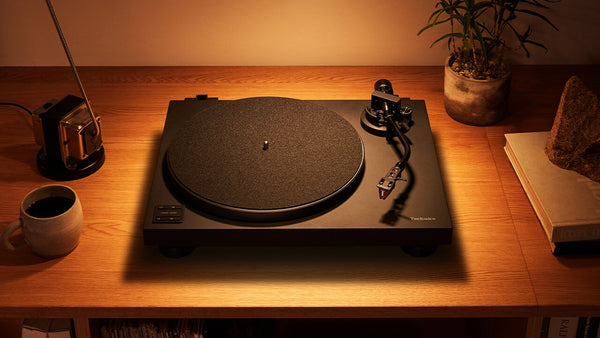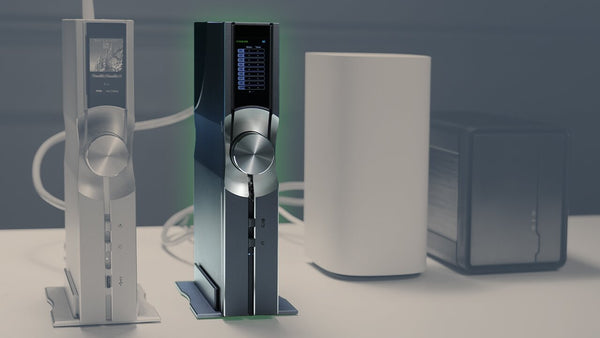Astell&Kern PD10 Review: Premium Portable Player Meets Home Hi-Fi
Read Time: Approx. 17 min.

TL;DR
- Groundbreaking digital audio player that functions both as a premium portable DAP and as a high-quality home music streamer via its included docking cradle with XLR outputs
- Offers a surprisingly warm, lush sound signature while maintaining excellent detail retrieval
- 6-inch full HD touchscreen, 15-hour battery life, Smart Gain technology, and extensive format support (up to 32-bit/768kHz PCM and DSD512)
The Docking Cradle: Transforming Your Portable DAP Into a Premium Music Streamer
If there's one thing to know about Astell&Kern, it's that they're always pushing the envelope. They're the driving force behind some of the most powerful DAPs on the market and a proponent for real vacuum tubes in audiophile-grade music players. With a highly diverse DAP line, it's no surprise that their newest product, the PD10 Digital Audio Player & Docking Cradle, breaks the mold of what a DAP should be.
The Astell&Kern PD10 Digital Audio Player represents a bold new direction in product design and innovation as the first DAP suitable for portable and home audio use. With a dedicated docking cradle, the PD10 transforms into a music streamer, integrating seamlessly into your two-channel setup. While its design echoes the Astell&Kern ACRO-CA1000T All-In-One Head-Fi Audio System, the PD10 stands tall as an ultra-portable music player, built for two worlds–on the go and at home.
Astell&Kern PD10 Review
Astell&Kern PD10 Unboxing

PROS
- Portable and Home Audio Use!!
- Surprisingly warm sound signature
- Included case fits like a glove
CONS
- Linear, almost thick sound quality, depending on song and headphones
- Must remove the case to use the docking cradle
- Pretty large for a DAP
Design
I'm not going to sugarcoat it–the PD10 looks AWESOME. There's this neat juxtaposition: Look at it head-on and you get a sleek, modern DAP. Flip it over to the backside, and you get a retro look with buttons that resemble a handheld cassette player. Astell&Kern is no stranger to unique designs, often pushing the limit of what a DAP should look like with angular, asymmetrical forms, sharp, precise edges, and a distinctive volume wheel. The PD10 breaks the mold in just about every way imaginable. Astell&Kern has ditched the iconic volume wheel and low-profile buttons, and instead opted for large physical buttons akin to something you'd see on a handheld tape recorder. With the stringent box shape, sharp corners, and physical buttons, it's giving the Sony Walkman, ever-so-slightly.
The PD10 is considerably larger than previous models. At 2.96" W x 5.88" H x 0.68" D, it's even larger than the SE300. The body is stainless steel, and the 6-inch Full HD touch screen is a dream. It's one of the largest screens we've seen on an AK DAP in a long time (and possibly to date), so do not worry if you've had trouble typing on the smaller models. On the top you'll find a physical power button that illuminates red when powering on and changes color depending on the song's bit depth. You'll also find two headphone jacks, a 4.4 mm and a 3.5mm, as well as a button lock switch on the left-hand side. The right side houses all of the control buttons (pause, play, skip, volume up/down), and on the bottom sits the USB-C port and microSD slot.
As soon as I turned on the PD10 I immediately noticed the quality of the HD screen. Graphics and text appear with striking accuracy. Everything was so crisp and easy to read, and the colors were incredibly vibrant. To be honest, it's probably one of the best screens I've seen on a DAP in a while.
At 15.34 oz, it's got some heft to it, but given that it's made of stainless steel, I'm not surprised. Now let's talk about accessories. The PD10 comes with its own case, two USB-C charging cables, four screen protectors, and, of course, the docking cradle. It's rare to see an Astell&Kern product come with the case included–we often have to wait a little while afterward. And may I just say, the case is BEAUTIFUL! Made with Synt3 eco-friendly polyurethane fabric, the case is a nice camel color with subtle accenting around the command buttons.
Now, about the case. It's a snug-fitting case, so you don't have to worry about the PD10 slipping out when you're on the go. It slides in through the top, which remains exposed, but it doesn't quite fit when you're using the docking station. You'll have to remove the case to mount the PD10 on the docking station, which isn't a problem, just a minor inconvenience if you're someone with little patience like me. However, Astell&Kern has informed us that the docking cradle is compatible with select AK DAP models, meaning you can mount a previous gen. model you may already own and reap the benefits of USB charging and USB DAC functions, just not the XLR output.
The Technical Specs
While I'm not doing an official comparison to the SP3000M, I want to point out some spec differences between the two models since the SP3000M is the last DAP model to come out before the PD10. The PD10 includes 256GB of internal memory with support for microSD cards up to 2 TB. It offers roughly 15 hours of playback (compared to 10 hours on the SP3000M) and takes approximately 3.5 hours to reach a full charge. It's one of the fastest charging Astell&Kern products, all thanks to the inclusion of Power Delivery 3.0 support which allows the DAP to charge faster and more efficiently than previous models.
The PD10 features dual-band 2.4/5GHz Wi-Fi, DLNA networking, USB digital audio output, USB-C for data transfer and charging, and the ability to use it as an external DAC via Bluetooth or a direct USB connection to a Mac or Windows-based PC. With Bluetooth 5.3 (compared to 5.0 on the SP3000M), the PD10 supports aptX HD, LHDC, and LDAC codecs with multiple options for 24-bit audio playback. This Bluetooth version features faster transmission speeds and greater range compared to previous versions. The PD10 supports native playback of high-resolution PCM music up to 32-bit/768kHz and DSD512. An LED ring around the power button provides information on the bit rate of the current track.
It wouldn't be an AK product without BT Sink or AK File Drop, which the PD10 supports. Using AK File Drop, you can freely transfer files wirelessly through a PC, smartphone, or FTP program located on the same network. BT Sink allows the PD10 to connect an external device via Bluetooth and functions as a Bluetooth DAC, allowing music from the external device to be played back in high quality.

16-bit

24-bit

32-bit

DSD
I/O
AK PD10
- USB Type-C Digital Input (for charging, PC & MAC)
- 3.5mm Unbalanced Output (which can act as optical out)
- 4.4mm Balanced Output
- MicroSD slot
Docking Cradle
- USB Type-C Input (for PD10 Charging & Data)
- 3-pin XLR balanced output
Docking Cradle for Home Use
With the docking cradle, the PD10 transforms from a mundane portable hifi component to a home audio source. The docking cradle itself is nice and small. The size and shape of it remind me of the round Amazon Echo Dot, and it won't take up much space at all. With the case off, the PD10 mounts right on the cradle, sitting flush with the USB-C port and the backrest, which is lined with silicone to avoid accidental scratches on the PD10. The docking cradle is compatible with previous AK DAP models that use a USB-C port. I tested it with the SP3000M (with the case removed), and it fit like a glove! It's important to note that you can only use the USB charging and DAC functions with previous gen. models, not the XLR output. And of course, the KANN series players aren't compatible with the docking cradle.
When the PD10 is mounted on the cradle, it offers USB charging via the USB Type-C port on the back, digital input, and XLR balanced outputs for seamless connection to speakers or a two-channel system. The XLR output levels can be controlled using the PD10's volume control or set to a fixed level by enabling the line out option in DAP's settings.
While on the dock, the small AK logo will illuminate various colors, displaying the bit-rate information of the track currently playing based on color. All in all, I give the cradle a warm welcome, but I hope AK will come out with an updated version that can be purchased separately and allows you to use the XLR output with most AK DAPs.
- Balanced XLR Output: Converts the PD10 into a high-fidelity desktop source with XLR connectivity to powered speakers or amplifiers
- USB-C Passthrough: Simultaneously charges and handles data transmission while docked
- LED Bit-Rate Display: LED lights indicate the playback resolution in real time
Sound
So, how does the AK PD10 sound? Let's get into it. As of the date of publication, I've only listened to the PD10 with headphones. I started off with the 64 Audio U12t IEMs paired with a Silver Dragon IEM Cable in the 3.5mm output, then moved on to the HiFiMan Arya Organic Headphones paired with a Black Dragon Premium Headphone Cable in the 4.4mm output.
Both the U12t In-Ear Monitors and Arya Organic Headphones have an impedance under 32 ohms (U12t: 12.6 ohms, Arya Organic: 16 ohms), so I didn't waste any time heading over to the settings to check out the Amp modes. While Normal Gain Amp mode was the perfect setting for both of them, I ultimately chose the Smart Gain Amp mode to see how the PD10 behaved when I switched gear. I bounced between the two modes to determine how accurate the smart gain mode truly was. I was thoroughly impressed (and relieved) to find no sonic differences between the two modes. I rounded out my listening session by pairing the PD10 with the Sennheiser HD800 S Headphones (300 ohms impedance) to test out the High Gain Amp mode. With three amp modes, it's safe to say there aren't any driveability issues but I did notice across the board that I had to turn up the volume a decent amount to enjoy a satisfying listening level.
Astell&Kern DAPs together have gained a reputation for being detailed, dynamic, and textured. Mind you, each model possesses its sonic qualities that give it a unique edge, but in general, they've got a sound signature that's neutral, articulate, and full of definition. The PD10 stands out in their DAP line with a warm sound signature–warmer than you'd expect from an AK DAP. I'll be entirely honest: It sounds unlike any AK DAP I've ever heard. Not in a bad way at all, it's just different. The sound signature is 100% warm, and because of that, it's more linear and, depending on the song, almost thick. It's lost some of that AK dynamics, but it still has terrific detail retrieval and texture.
Because of how warm the sound signature is, it took me a second to adjust, but once I threw out my preconceived notions of what an "AK DAP should sound like," I was vibing. Standout genres for me included pop, indie/alternative, folk, country, and jazz. The PD10 delivers a midrange that's both lush and detailed. When I listened with the U12t, which are warm and engaging, I got a sense for how lush and musical the midrange can be. But when I paired it with the HD 800 S, which is more natural and articulate-sounding, I enjoyed the fine details and nuance in the midrange of Taylor Swift's song Florida!!! The PD10 does a great job of complementing and creating balance with your headphones, IEMs, and speakers. So while the sound signature is on the warmer side, depending on the gear I was using, I got to enjoy the sonic attributes of each piece of gear without feeling like it was overshadowed by the PD10.
The PD10 has great mid and sub bass texture, drawing out the emotion and character of every song. Closing my eyes and soaking up every second of my favorite songs, I enjoyed a high level of authenticity and realism that you just can't beat. Florence and Machine was a standout for me in this regard. The lead singer's vocals are ethereal and full of raw, organic emotion. Songs packed with emotion are my favorite kind of songs to listen to, and the PD10's ability to convey that emotion did not disappoint one bit. The treble extended quite well, and I was thrilled to discover there was no harshness or sibilance on songs with heavy brass instrumentation.
Who is the PD10 for? With a warm sound signature and no shortage of detail retrieval, the Astell&Kern PD10 DAP is the perfect choice for audiophiles craving sonic excellence from a portable player. The inclusion of three amp modes and an impressive quad-DAC configuration allows listeners to enjoy each and every pair of headphones and IEMs in their collection with ease. The AK PD10 DAP offers a unique sound quality distinctly different from anything we've heard from Astell&Kern in the past.

Cold Shoulder
By Adele
(19)

Florida!!!
By Taylor Swift
(The Tortured Poets Department)

Sky Full of Song
By Florence & The Machine
(High as Hope)

Luck Be a Lady
By Frank Sinatra
(Nothing But The Best)
Features
- Quad-DAC Design: Four AK4498EX DACs with dual AK4191EQ digital modulators in Astell&Kern's proprietary HEXA circuit structure for complete digital-to-analog separation
- Impedance-Adaptive Dual Amplifiers with Smart Gain auto-detection
- Independent audio circuits for balanced/unbalanced outputs
- Hi-Res playback support: Capable of native PCM up to 32-bit/768kHz and DSD512 playback
- Roon Certified, supports Roon Arc, and Apple AirPlay
- Customizable crossfeed for reduced listening fatigue; 6 selectable DAC filters
- Bluetooth 5.3 with aptX HD, LDAC, and LHDC codec support
- Wireless Features: AK File Drop, AirPlay streaming, Roon Certified, ReplayGain volume adjustment
- 256GB built-in memory with microSD expansion up to 2TB
- 6-inch Full HD (1080 x 2160) touchscreen with LED indicators showing bit-rate information
- 5,700mAh battery providing up to 15 hours of playback
- Included docking cradle with XLR balanced outputs for home audio use
Complete Separation of Digital and Analog Signals in a HEXA-Audio Circuitry Structure
The PD10 is equipped with the same innovative HEXA audio circuit design first developed for the flagship SP3000 DAP. At the heart of the PD10 sits four AKM AK4498EX DACs and two separate AK4191EQ chips that handle digital signals. The PD10 is the world's first DAP incorporating the newly released AK4498EX chip.
While most digital audio players process digital and analog signals together inside the DAC, Astell&Kern's advanced HEXA structure takes a different approach. This structure reduces the noise of the digital signal input through the AK4191EQ, a separate digital delta-sigma modulator, and the AK4498EX DAC is then designed to process the analog signals separately. By physically and perfectly separating digital and analog signal processing, the PD10 delivers an astonishing level of sound.
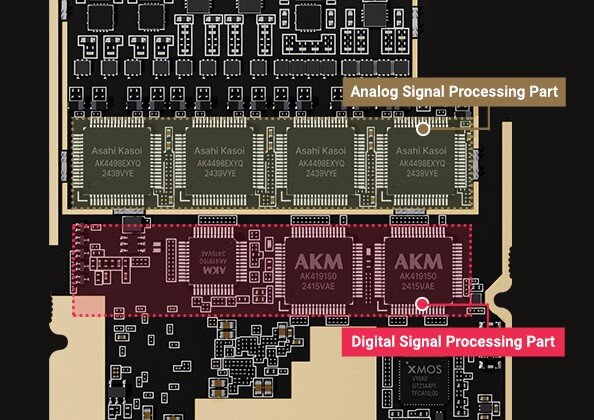
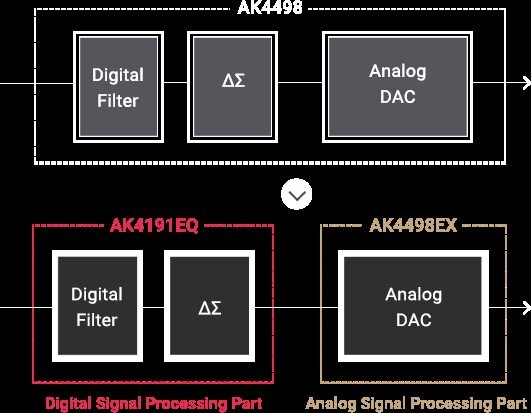
Independent Dual Audio Circuits for Home Audio Use with XLR Balanced Inputs
Embracing the spirit of innovation, Astell&Kern has worked to overcome the limitations of sound by designing an independent dual audio circuit for unbalanced and balanced outputs. Almost all other DAPs use the same internal DAC for both unbalanced and balanced outputs. Since the signal from the DAC is divided into unbalanced and balanced, then delivered to the Amp, an audio switch is essential.
When using a switch, there is a limit to the range of signal sent by the DAC, so most DAPs reduce the signal size first and then when the signal is transmitted back to the amplifier, it is necessary to restore the original signal size. This causes a limitation in improving the audio performance.
By creating two separate audio circuits, one for balanced output and a second for unbalanced output, Astell&Kern maximizes audio performance no matter what output is being used.
Impedance-Adaptive Dual Amplifiers with Smart Gain
The PD10 features two distinct amplifiers–Normal Gain Amp and High Gain Amp–because two is better than one! Each amp has different sound tunings applied, so you can tailor the sound based on which headphones or IEMs you're using.
- Normal Gain Amp reduces delicate details and delivers high-purity sound, faithfully reproducing the original sound.
- High Gain Amp excels in handling complex and dynamic sounds, rendering audio signals more vividly with greater clarity for a more immersive listening experience.
- Smart Gain instantly detects the impedance of connected headphones or earphones and auto adjusts the amp

The moment you connect a headphone or IEM to the PD10, the player instantly checks the impedance of the connected device and automatically sets the appropriate amp. Regardless of what is connected, the PD10 automatically distinguishes between low and high impedance and matches it with the optimal Amp, without having to worry about manually changing settings to find the perfect match.
Earphones with an impedance of 32 ohms or less are set to Normal Gain, providing a maximum output of 5.5Vrms when connected to the balanced output. Earphones greater than 32 ohms are set to High Gain, providing ample output of up to 8.3Vrms for balanced out.
The Smart Gain function optimizes amplifier matching, providing those who own a wide variety of headphones and earphones with a unique and refined listening experience.
Dragon Cables
[Silver Dragon Premium Interconnect Cable and Silver Dragon Premium USB Cable]
There are a lot of reasons why you need to make sure your audio cables are not afterthoughts.
Our HiFi Audio Dragon Cables bring out more of what you love in your music and audio gear. If you love your headphones but wish they had a bit more top-end sparkle - a Silver Dragon Headphone Cable would be a great option. If your USB cables keep dying - as many stock cables do - then check out our quality USB Audio Cables. We say time and time again that materials matter, and our audio cables and custom geometries actually help to bring out those desired properties in your gear and music. We make tons of custom options for our customers so that you can get the right HiFi Audio cable for your exact needs. If you have any questions feel free to Contact Us and we'll be more than happy to help.
Verdict
The Astell&Kern PD10 DAP & Docking Cradle represents a bold new direction in the evolution of Astell&Kern's portable audio lineup. With the included docking cradle, the PD10 transforms itself from a traditional digital audio player to a home audio powerhouse, where you can enjoy your favorite music in any setting. The AK PD10 DAP offers a sound quality distinctly different from anything we've heard from Astell&Kern in the past–one that's warm and lush without sacrificing detail retrieval and nuance.
With three amp modes and an impressive quad-DAC configuration, the PD10 can handle the performance needs of your favorite headphones, IEMs, and speakers. Use the PD10 on the go with one of our Dragon Audio Headphone Cables, or station it at your desk with our Silver Dragon Premium Interconnect Cable and/or Silver Dragon Premium USB Cable–the choice is yours. That's the true beauty of the Astell&Kern PD10 DAP. You get to decide how you listen, from the DAC filters and amp modes to the docking cradle and linear form factor, the functionality of the PD10 DAP is limitless.
Featured Products
Related Videos
Astell&Kern SP3000M DAP (Digital Audio Player) Review
Astell&Kern BT Sink Tutorial & Review
Astell&Kern AK File Drop Tutorial & Review
What's in the Box
Specifications
GENERAL SPECIFICATIONS
Model: PD10
Body Color: Silver
Body Material: Stainless Steel
Supported OS: Windows 8, 10, 11 (32/64-bit) MAC OS X 10.7
Dimensions: 2.96" (75.4mm) W × 5.88" (149.5mm) H × 0.68" (17.3mm) D
Weight: 15.34oz (435g)
Display: 6-inch Full HD (1080x2160) touch screen
Built-In Memory: 256GB [NAND]
External Memory: microSD x1 (Max. 1.5TB)
Battery:
- Capacity: 5,770mAh 3.8V Li-Polymer
- Charge Time: About 4hours (PD3.0 Charging)
- Playback Time: About 15hours (Standard : FLAC, 16bit, 44.1kHz, Vol.50, LCD Off, Normal Gain)
CPU: Octa-core
Wi-Fi: 802.11 a/b/g/n/ac (2.4/5GHz)
Bluetooth: V5.3 (A2DP, AVRCP, Qualcomm® aptX™ HD, LDAC, LHDC, SBC, AAC)
Operating Temperature: 0℃ ~ + 40℃ (32℉~ 104℉)
Feature Enhancements: Firmware upgrade supported (OTA)
DAC: AKM4191EQ ×2 (Dual Modulator) + AKM4498EX ×4 (Dual+Dual DAC)
Input: USB Type-C Input (for charging, PC & MAC)
Outputs:
- Unbalanced Out (3.5mm), Optical Out (3.5mm)
- Balanced Out (4.4m, only 5-pole supported)
Supported Audio Formats: WAV, FLAC, WMA, MP3, OGG, APE, AAC, ALAC, AIFF, DFF, DSF
Sample Rate:
- PCM: 8kHz ~ 768kHz (8/16/24/32bits per Sample)
- DSD Native: DSD64(1bit 2.8MHz), Stereo / DSD128(1bit 5.6MHz), Stereo
- DSD256(1bit 11.2MHz), Stereo / DSD512(1bit 22.4MHz), Stereo
Output Level:
- [Normal] Unbalanced 2.6Vrms │ Balanced 5.6Vrms (Condition No Load)
- [High] Unbalanced 4Vrms │ Balanced 8.3Vrms (Condition No Load)
- [Cradle XLR Out] 5.6Vrms (Condition Load)
Decoding: Support up to 32-bit/768kHz Bit to Bit playback
AUDIO SPECIFICATIONS
Frequency Response:
- ±0.066dB (Condition : 20Hz~20kHz) Unbalanced │ ±0.066dB (Condition : 20Hz~20kHz) Balanced
- ±0.62dB (Condition : 20Hz~70kHz) Unbalanced │ ±0.61dB (Condition : 20Hz~70kHz) Balanced
S/N: 125dB @ 1kHz, Unbalanced │ 128dB @ 1kHz, Balanced
Crosstalk: -137dB @ 1kHz, Unbalanced │ -138dB @ 1kHz, Balanced
THD+N: 0.0007% @ 1kHz, Unbalanced │ 0.0006% @ 1kHz, Balanced
IMD SMPTE: 0.0004% 800Hz 10kHz (4:1) Unbalanced │Balanced
Output Impedance: Unbalanced Out 3.5mm (1ohm) │ Balanced Out 4.4mm(1.6ohm) *Audio measurement specifications are based on Normal gain.
Clock Jitter: 25pS (Typ.)
Reference Clock Jitter: 250 Femto Seconds




